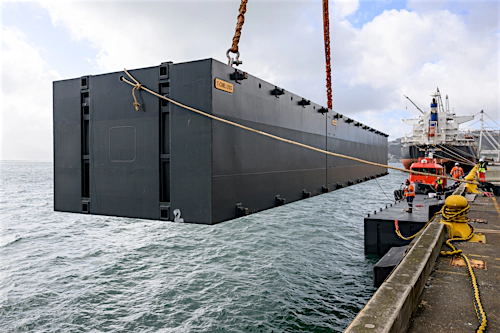Seaview Energy Resilience















CentrePort’s bulk liquid fuel trade is supplied through three wharves, with the main volume supplied through the Seaview Wharf which feeds the Z-Energy, Mobil and BP tank farms. Seaview Wharf is rated the second most critical lifeline asset in the Wellington region; hence any failure of the wharf would present an extreme impact upon both the regional economy and CentrePort’s reputation.
Seaview Wharf is approaching 50 years in service and suffered damage during the 2016 Kaikōura earthquake event. While it is operable, Seaview Wharf is seismically vulnerable and needs to be upgraded to meet modern standards for fuel supply wharves.
The project comes with some significant geotechnical challenges as the site is based on a rock reef that dissects the Hutt Valley aquifer. It is also critical the fuel terminals stay operational during construction.
BPC is using 4D programming to establish interface clashes with port operations to streamline construction methodology around ongoing port operations.
Substructure digital scanning was carried out under the existing wharf. This provided a 3D model to inform the design teams as to the most appropriate retrofitted solution considering the constraints and opportunities exposed by the digital scan. Concepts were drawn onto the model, exposing clashes and issues with alignment at the design phase. Traditionally these issues would be picked up after access is established, risking programme intent while the intended design and hardware is modified to suit.
To protect our marine life around the site, locals have been given Marine Mammal Observation training to act as mammal spotters to ensure works are stopped when mammals enter the exclusion zones. A system of bubble curtains is used to dampen subsea acoustics from piling activities, thus reducing the effect of noise on marine mammals in the harbour.
Although bubble curtains have been used to some degree in New Zealand, their use has not been supported by acoustic and environmental data. By working with Echo Barrier, BPC developed a reputable system that comes with data which can be used to understand the dampening effects of acoustic frequency of various size bubbles used in the curtain. BPC also consulted with environmental experts on an allowable level of noise that does not disrupt the various mammal subspecies, and acoustic expertise to confirm the affected area with and without the use of a bubble curtain.
Before the piling work could begin, the rocks along the work site had to be covered with netting to prevent any Kororā Little Blue Penguins from returning to the site to nest. Our crew worked with the Department of Conservation staff and their specially trained dogs to ensure all the young penguins in the area had fledged before work began on site. New penguin nesting boxes have been established further along the coast, away from the construction site.





